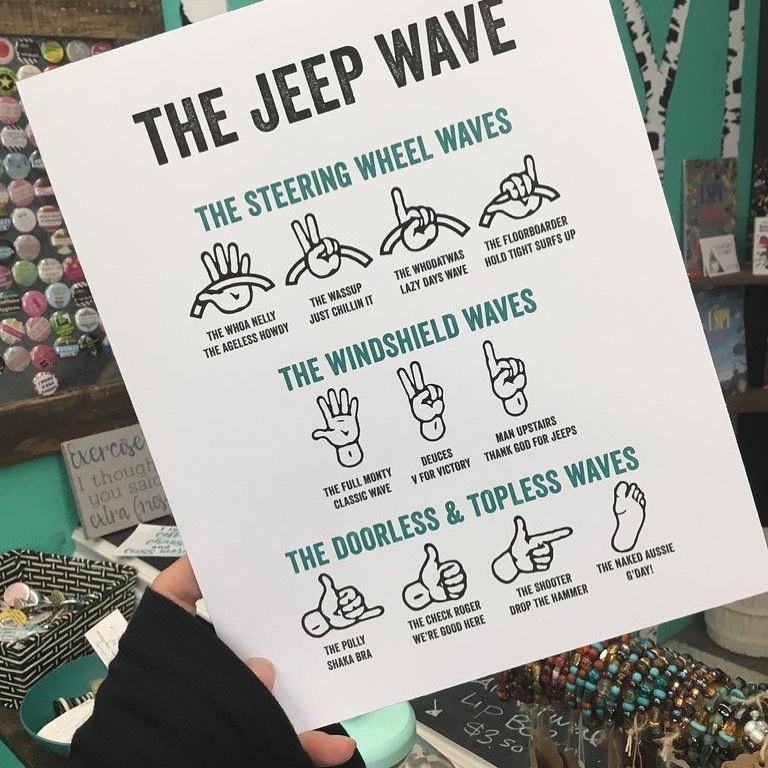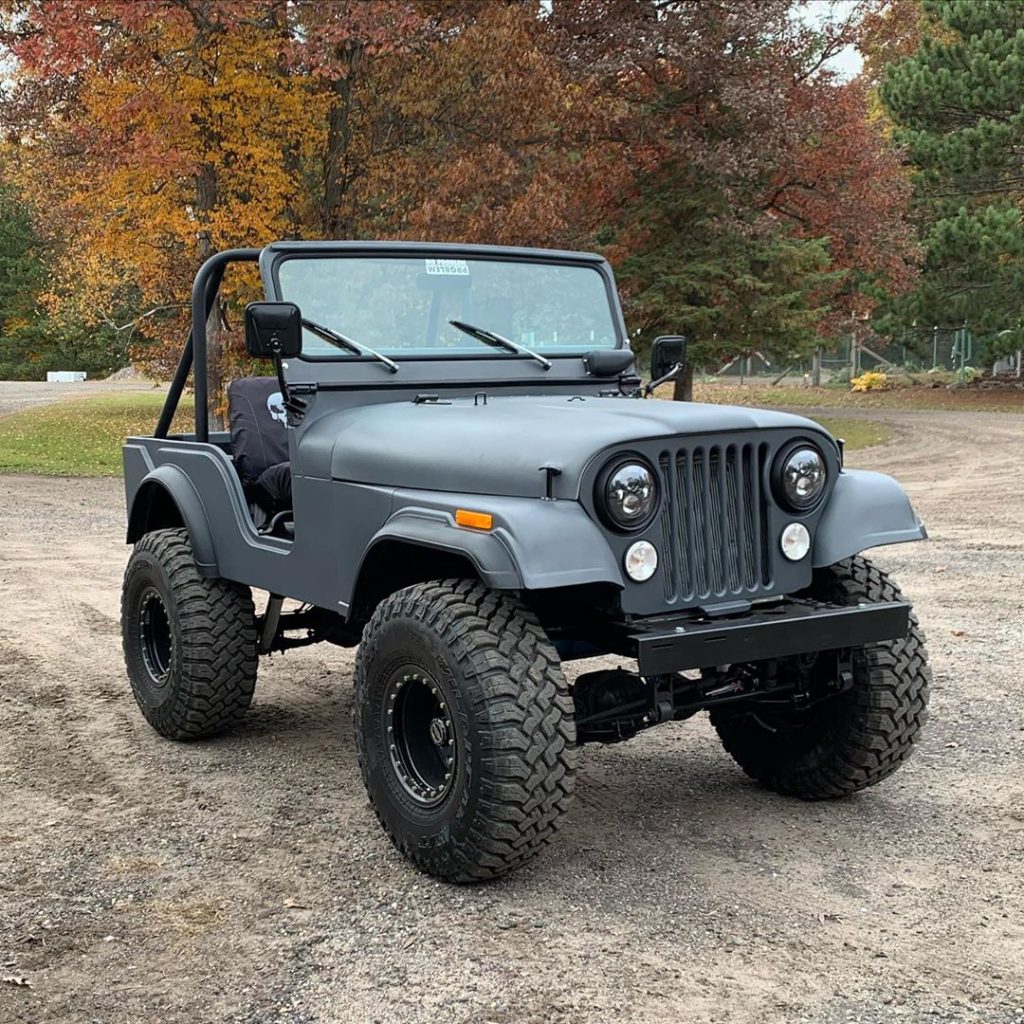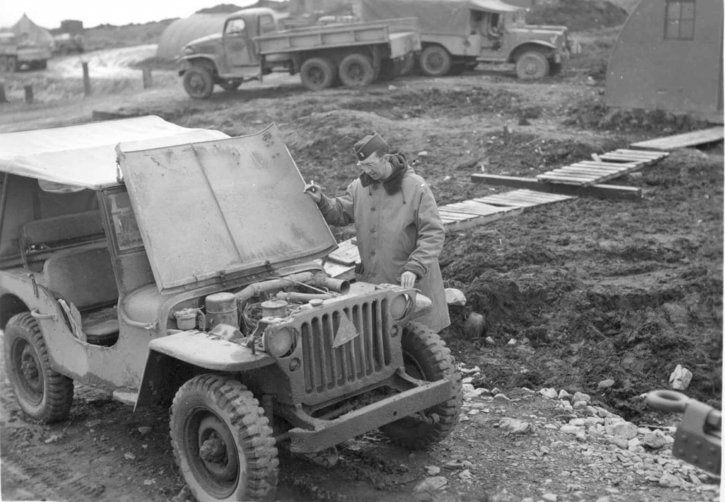THE WAVE!
There are so many different ways the concept of ‘the wave’ is employed; from sports fans in the stands in a slow, synchronized roll to bikers and boaters giving an air high-five to their passing travelers. Jeep owners have the same tradition when it comes to acknowledging their fellow four-wheelers on (and off) the road. It’s a recognition of sorts that says, “Yeah, we cool, we got a bitchin’ ride, we know it and we show it.”

Jeep enthusiasm is like a worldwide plague (a good one, of course) – having spread to all seven continents with dealerships located in dozens of countries all over the planet. Recently CNBC News reported the popular auto brand is performing almost “freakishly well” world-wide and looking at doubling its sales globally over the next few years. If you think this goal is bogus, in 2014 Jeep sold an estimated one million vehicles and by the end of 2018, this figure was anticipated to reach nearly two million in just four short years.
For such a well-known and popular brand, there’s a certain amount of mystery surrounding this relatively unrivaled ride. Many are aware of the Jeep’s ties to the military which is why fans of four-wheeling will enjoy this trivial trip down memory lane.
A Couple of Quick Quads
Beginning in June of 1940 when the decision to join the Allied forces in WWII was looming on the horizon, the American government was seeking a quarter-ton, ‘light reconnaissance vehicle’ and three automakers volunteered for duty: Bantam, Willys and Ford. Within a year they collectively pumped out a template that would eventually be known worldwide as the Jeep.
Ultimately it was Willys who delivered two prototype ‘Quads,’ named for the 4×4 system utilized in the design. The pairwere produced in an unprecedented 75 freaking days and presented to the U.S. Army on Veteran’s Day (known as Armistice Day at the time) in November of 1940. The ass-kicking bloodlines were clearly established as the boxy concept car still has ties to the current shape and appearance of the Wrangler.
A Wild Ride for Civilians
The acronym ‘CJ’ (or Civilian Jeep) was first assigned to Wranglers when they were being marketed towards non-military members of the automobile marketplace. Some of the most popular editions to this lineup of off-roaders are still cherished today. Coveted, stand-out editions from the past include the:

- Blinged-out 1961 Jeep CJ-5 Tuxedo Park option which added chrome to the bumpers, hood, tail lights and gas cap appealing to a more suburban crowd
- 1977 CJ 5 and 7 Golden Eagle caught the attention of patriotic Americans in the wake of the 1976 Bicentennial celebration
- Levis branded 1975 Jeeps were given denim-inspired trim on the seats, dash, sun visors and headliners
Jeep was owned by AMC at the time and their genius move to dress up Jeeps in a Levi’s branded jean look was also made available to punch up the cool factor on the Gremlin, Hornet and Pacer (nice try, guys). It was a brilliant marketing maneuver; the Levi’s brand was exploding globally as a hot-ticket, must-have addition to everyone’s wardrobe which extended into many driveways around the world.
A Rubicon Conundrum
There’s nary a Jeep fan around that hasn’t heard about the Rubicon Trail running through the Sierra mountain range near Lake Tahoe in Northern California. There’s also a river by the same name running through upper Italy and users on Jeep forums often argue like racoons around a trash bin about the origin of the name Rubicon for this much loved model.
Fans of the river theory point to the history of the stream crossed by Julius Caesar on January 10, 49 B.C. leading to a bloody civil war that would eventually end his rule of the Roman Empire. This event is synonymous with burning one’s bridges and reaching to a point of no return which one could argue lend themselves well to the ‘take-no-prisoners’ appeal of a vehicle like the Jeep.
Never the less, Rubicon Trail historians tend to disagree with this theory and a plaque placed at one point of the Rubicon Trail trek in Northern California further muddies the water when it comes to the origin of the four-wheeler’s title. In cooperation with the Native Sons of the Golden West, Jeep Jamboree, Inc. and other local entities, the plausible explanation for this historical marker is all over the map.
First, it relates to Caesar’s ancient river crossing and goes on to remember a time when Native Americans used this trail as a trade route during the 1800s ending with the 2017 celebration of the 65th anniversary of Jeeps traversing one of the world’s “first off-road adventure” treks. One might say the earlier Cherokee model may have led to an Indian-related naming or that the Rubicon Trail was named after a nearby river, named after the stream in Italy and the Jeep was named after one, both or all three of them. In any event, what a yard sale. That’s a lot of name-calling without a definitive answer revealed. Even a couple of beers won’t sort this out.
A Jeep by Any Other Name
The death wobble of debate over the origin of names isn’t restricted to the various models. Another fuzzy fact is the origin of the name of the Jeep brand itself. Some will say it’s a recreation or shortening of the term ‘General-Purpose’ vehicle aka a GP. Others claim it stems from the Ford branding of GPW in reference to the Government, the P pointing to the width of the axle at 80″ and W as a nod to the Willy aspect of its ancestry.
There are even folks who believe the fictional Eugene the Jeep character who first appeared in Popeye comic strips beginning in 1936 was the inspiration behind the naming of this vehicle. It’s not a huge stretch when you consider that the dog-like drawing had the ability to magically transform itself to any location and had a one-word vocabulary of ‘Jeep’.
Capitalizing on Wartime Advertising Campaigns
According to the AACA (Antique Automobile Club of America), the Jeep brand was originally known as simply the Willy Quad and their early advertising campaigns capitalized on the war effort during the time of early production. In one epic black-and-white photo from 1941, a Jeep was pictured commandeering the steps of the U.S. Capitol like a boss, driven by then New York Senator James Mead.
Images of the all-purpose utility vehicle blazing across battle lines in Europe were commonplace at the time and included stunning watercolor depictions of Jeeps in the heat of battle by artist James Milton Sessions whose works are still highly sought after to this day. Real photos from the front lines touted this vehicle would be at least partially responsible for the eventual victory by Allied forces.

If WWII was the “war to end all wars,” JeepBeef and JeepHer are the final destinations for everything four-wheelers love about driving this unique vehicle on and off-the-road.
Be sure to sign up for everything Jeep from fun facts and startling stats to dazzling discounts and pumped-up promotions.









